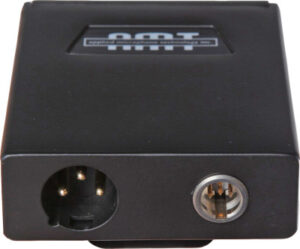A Variety of Models for Each Microphone
AMT has spent years developing relationships with every type of player. We have worked with the customer that plays once a month to the very high-end professional. From the instrumentalist looking for wired setups to wireless. From stadium concerts to concert halls, and jazz clubs. With this knowledge, AMT is the only company that develops an instrument microphone capable of filling every need AND desire that a player may want. AMT has spent many hours on the phone, on the stage, in the studio, and in the design, room to accommodate and offer a solution for everyone in need of an instrument microphone system. In some cases, AMT offers multiple solutions for each instrument including “On the Bell” and “Off the Bell” mounting and high SPL requirements to name a few.
Once a customer decides on the microphone for their particular instrument, they will need to select a model. It is important to note that all the microphones either require a preamp for wired use or a wireless system to be used. NEVER connect an AMT microphone directly to a mixing board/phantom power source without either an AMT designed preamp or a wireless system.
We often get asked, which is the correct wired system for me? The first topic we will tackle is the basic models using the flagship AMT LS saxophone system as the example. The following information applies to every wind instrument microphone that we manufacture. Each microphone (LS, Ta2, P800, etc, etc) can be ordered with these options:
1. INLINE models: (LSi, P800i, Ta2i, etc) include the Inline preamp. The inline preamp powers the microphone only by phantom power, so you must have a mixing board with phantom power to use this microphone. The microphone can also be used with all of AMT wireless systems, with any of the cable options for other brands of wireless, and can be used with AMT-Inline-Preampthe other AMT preamps. (BP45, AP40) The inline preamp includes a -10dB cut as well as a

low roll-off of the filter. The cut is used depending on the gain structure of your particular mixing board, and the cut filter can be used if the microphone is being used in conjunction with sub-bass or if for some reason you need to remove low frequency depending on the room you performing in. The inline preamp can be clipped to a music stand or worn on the belt. The output is an XLR to the mixing board and the input is a Ta3 locking mini connector from the microphone.

2. Standard models: (LS, P800, Ta2, etc etc) The standard models come with the BP45 preamp. The BP45 preamp is the most common preamp ordered.
The BP45 powers the microphone correctly with either phantom power or one AA battery. The preamp, like the inline preamp, includes a low-cut filter but the BP45 in addition to the cut filter also includes an off button. The off button is ONLY activated when using the AA battery to power the system. The BP45 also includes a “transformer circuit” which is often useful and activated without the knowledge of the common player even knowing it is assisting in their performance. The specially designed circuit helps control variances in PA systems where grounding problems, hums, and noises can appear depending on the quality of the system the microphone is being plugged into.

3. Studio Models(AP40): (M40, S25B, LS Studio, P800 Studio, Ta2 Studio, etc etc) The AMT Studio models were originally intended for professional sound engineers looking for the AMT sound while placing the preamp on the floor and out of hands reach. The preamp includes AMT’s “most pure” signal path.
The AP 40 is an electronically balanced power supply feeding the microphone the exact voltage while maintaining the most purest signal path. The studio preamp includes an XLR output with locking 4-pin input connectors. It is intended to sit on the floor similar to a DI box. The AP40 is also used in conjunction with other models like the M40 Piano microphone to allow placement away from where the microphone is placed. The AP40 requires either phantom power or one 9volt battery.
3. “W” models: (LSW, P800W, Ta2W, etc etc) These models are sold with only the microphone and a cable. They are intended for the customer that already owns a wireless system or is looking to use the AMT microphone with an AMT preamp or wireless system that they already own. The “W” models come with either an AMT -TA4 cable which interfaces with Shure, Sabine, and Line 6 wireless systems OR an AMT -3.5mm cable that interfaces with Sennheiser wireless systems. Any of the W models will also work with AMT wireless systems including the Wi5C, Wi5IIC, and Quantum7 wireless. They can also be used with any of the AMT preamps.
